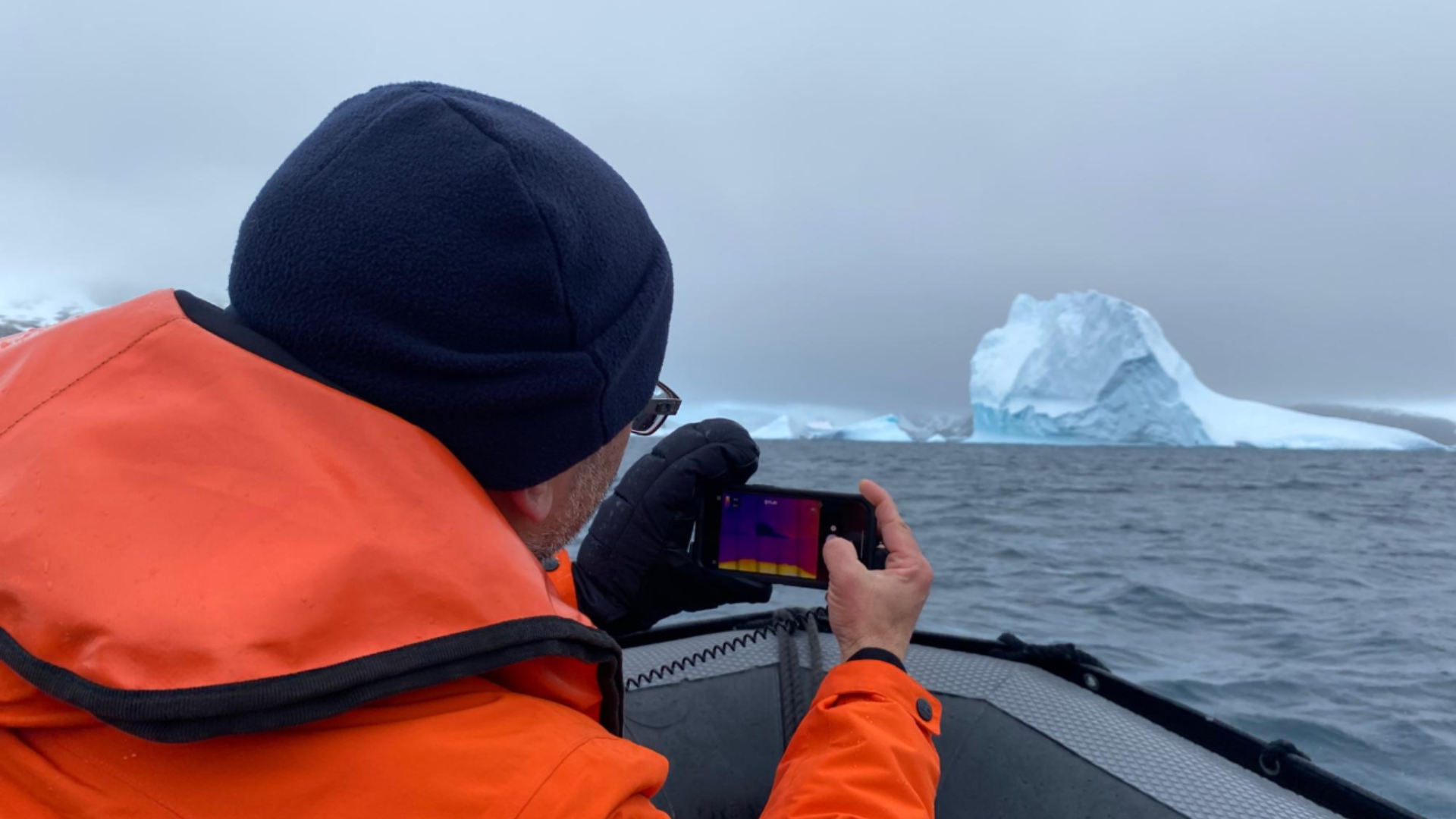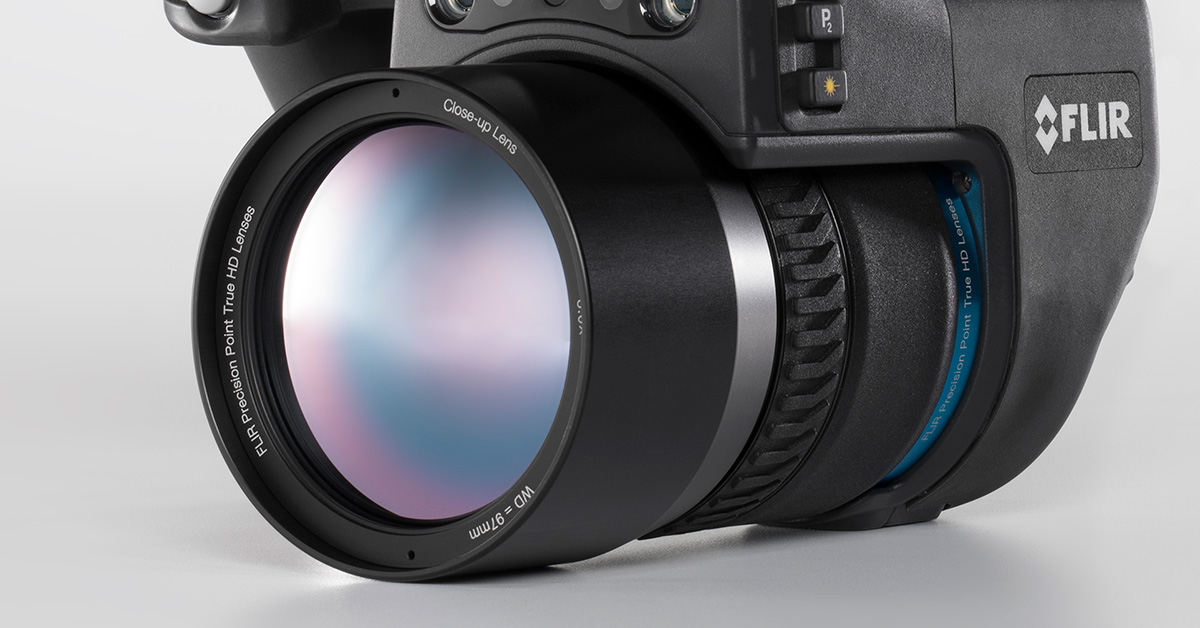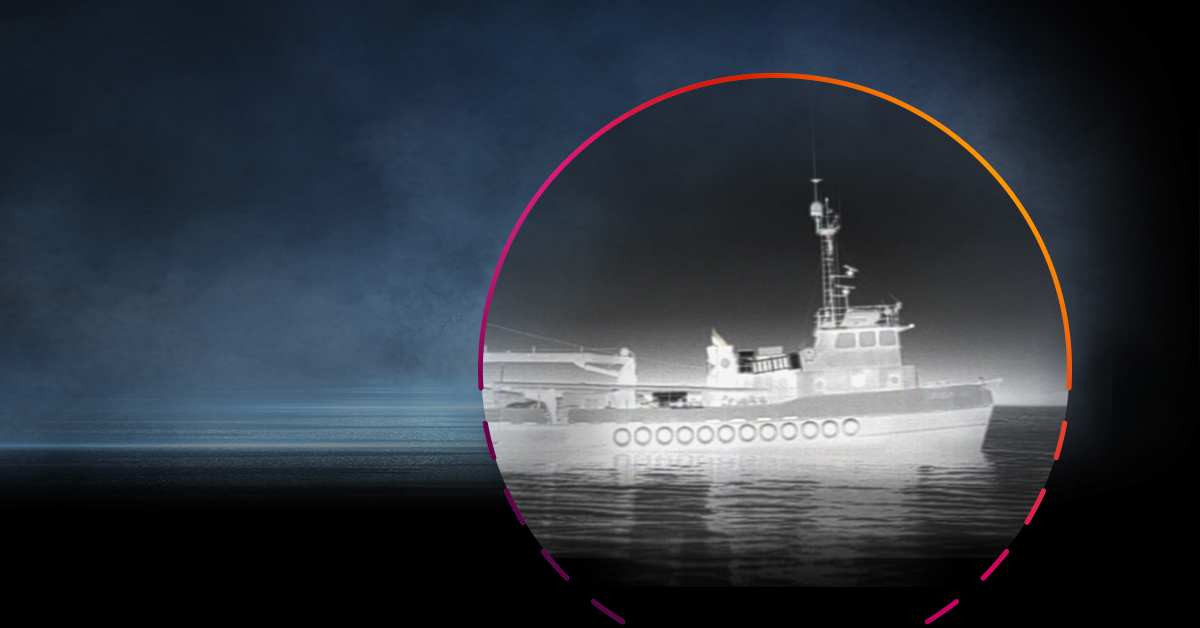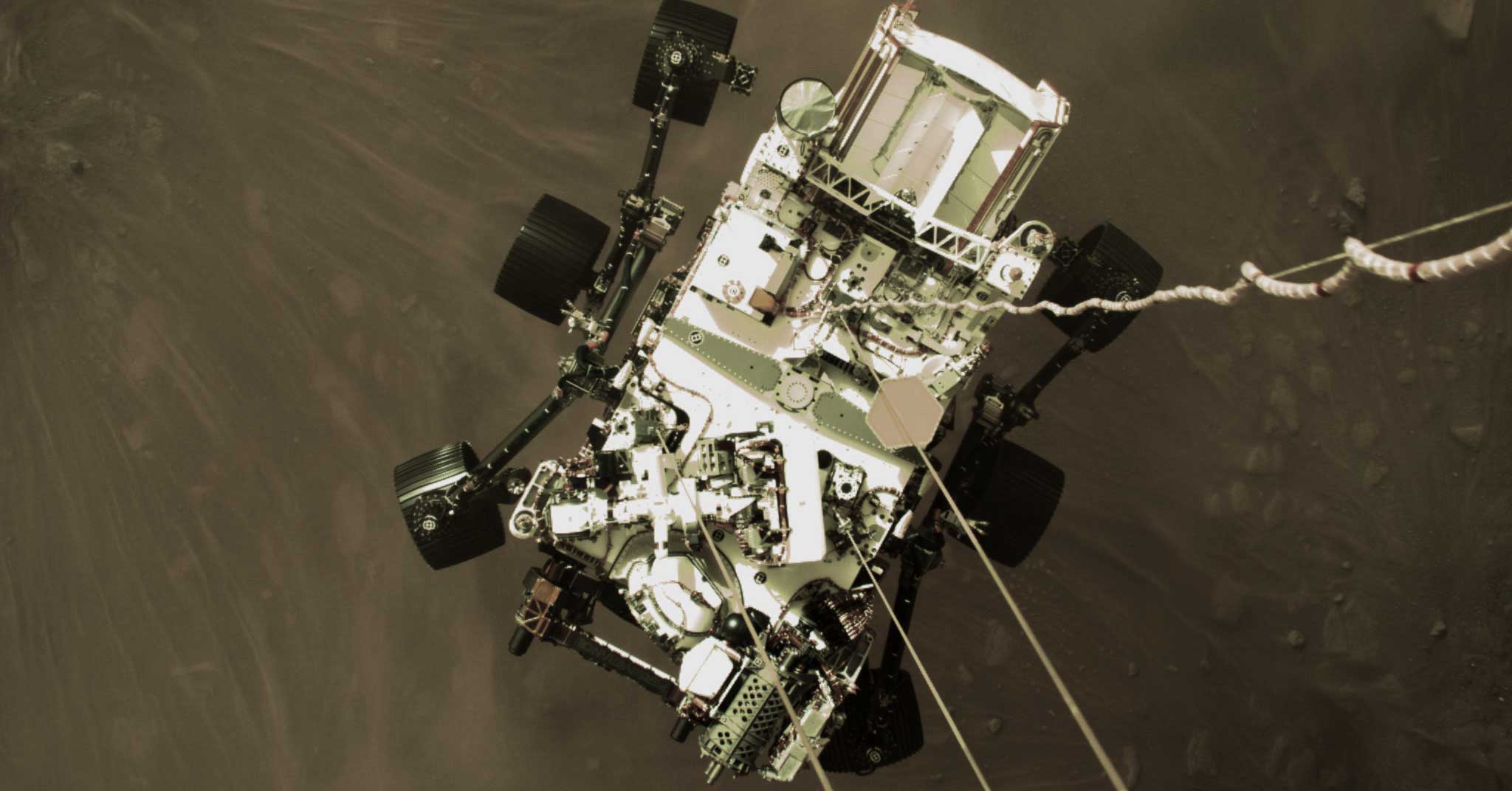Physics Teacher Takes FLIR ONE Edge on Antarctic Expedition

In February of 2023, fifty teachers from around the United States and Canada were selected to go on a series of field-based expeditions as part of the 15th cohort of the Grosvenor Teacher Fellowship (GTF). Offered by the National Geographic Society and Lindblad Expeditions, the GTF serves as a professional development opportunity for Pre-K through Grade 12 educators to explore unique environments and bring their experiences back to share with their classrooms and communities. The fellowship receives hundreds of applicants from across the two countries; among the deserving fellowship recipients was high school physics teacher, Joe Muise.

Joe Muise posing with the FLIR ONE Edge he brought with him on his expedition.
An opportunity to explore far remote locations is rare for a teacher like Muise. He decided to take full advantage of it by applying for one of the hardest regions to get to: Antarctica. While travelling to a difficult to reach area for research is great on its own, Muise was also motivated by the chance to teach his students about the growing effects of climate change on the region. “I'm trying to be conscious of adding climate change physics to what I'm doing,” Muise told us in an interview. “(Antarctica) is a place where we can collect a lot of data to show climate change but is also very affected by climate change. There's a lot of ways that I could tie it into my teaching, probably more so than somewhere tropical.”
Glaciers contain about three-quarters of the Earth’s freshwater and are the largest reservoir of freshwater on the planet, according to the US Department of Interior. As sea and air temperatures increase, icebergs begin to break apart and melt, causing sea levels to rise and gradually affect coastal areas like the one Muise lives in. Growing tides in his local area is just one reason he’s motivated to bring the topic into his classroom. “It's an important field, but also one that I think students are perhaps underinformed on and they are the ones that will have to live with it longer than I will,” Muise said. “Getting them at least informed, and hopefully inspired to learn more about it sort of became a driving part of this for me.
Muise was set for a 10-day expedition and brought with him a variety of gear for collecting data, including a FLIR ONE® Edge mobile thermal camera. One of his goals for this journey was to capture thermal images of glaciers and icebergs, as the temperature data he collected would be useful when discussing climate change with his students. Muise was already familiar with thermal imaging from a previous experience advising a high school team that incorporated FLIR Lepton® in a design that won CanSat satellite competition.
While there are a variety of thermal cameras to choose from, Muise ultimately went with the FLIR ONE Edge as he felt it would perform the best while riding boats through salt-water spray and waves of broken ice. “It was kind of the sweet spot of durability and responsible price. It seemed like the FLIR ONE would get good enough data for what I wanted to achieve,” Muise said.
Muise carried his thermal camera with him by having it locked onto his phone and then the phone itself tethered to his coat with a bungie cable. “One time we hit a wave and my phone fell out of my hand, but it was connected to me, so it didn't go very far and the camera stayed attached. It definitely got sprayed too and it was snowing some days and it still held up.”

Muise capturing thermal images of an iceberg while kayaking in Antarctic water.
After sailing across the waters of the Antarctic, Muise successfully captured the thermal glacier data he set out to gather while also capturing a variety of wildlife. Now he’s preparing to incorporate his captures into his lessons and share his story with his students. Muise plans on using his data as a hypothetical case for his students and asking how they would use it if they were to study long term climate change themselves. “I wanted to take pictures of icebergs and various forms of ice with my thermal camera so that I can get students to analyze it and talk about the temperature of the ice versus the temperature of the water and the air, and then have a discussion about how this is a snapshot of one moment in time. Hopefully it will lead to the discussion that you need tracking over longer periods of time and build up a data set so you can show changes over years or decades,” said Muise.




Muise captured thermal images of a variety of ice forms and some local wildlife
“I think the thermal imaging camera is a good hook to get students interested in a topic that they need to know more about and be aware of because going forward they're going to be affected by it. It's inspiring students through a sort of novel application that hopefully gets them more knowledgeable and more interested. My idea is to get them interested to figure out how they're going to help make the next change.”
To see the full details of Joe Muise’s Antarctic expedition and see more of his thermal images, you can head over to his blog found here.
You can also find the FLIR ONE Edge and FLIR research cameras on our website


